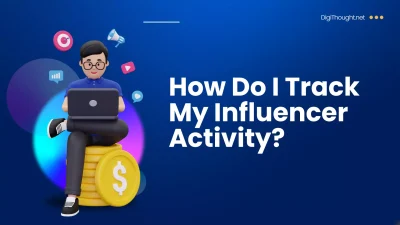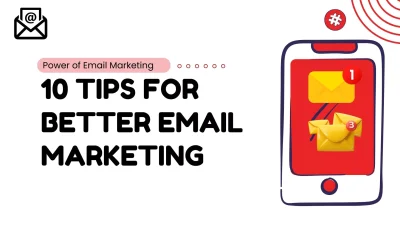Marketing is evolving rapidly, and businesses are constantly searching for ways to stand out in crowded marketplaces. One strategy that consistently helps brands gain an edge is competitive marketing. But what is competitive marketing, and why should you care?
This blog will break down the fundamentals of competitive marketing, explore its benefits, and provide actionable steps to implement a competitive marketing strategy for your business. By the end, you’ll have a clear understanding of how to leverage this powerful approach to outperform your competition.
What Is Competitive Marketing?
At its core, competitive marketing is the practice of analyzing your competitors’ strategies, strengths, and weaknesses to inform and improve your own marketing efforts. It goes beyond simply knowing who your competitors are; it requires a deep understanding of their actions, messaging, pricing, and overall market positioning.
Competitive marketing often involves activities like:
- Monitoring competitor campaigns.
- Analyzing their customer outreach and engagement strategies.
- Evaluating and identifying gaps in their product or service offerings.
By using these insights, businesses can refine their marketing strategies to better appeal to their target audience and carve out a unique position in their industry.
Why Is Competitive Marketing Important?
Standing out in today’s competitive landscape is no easy feat. Whether you’re a small startup or a well-established business, competitive marketing is critical for several reasons:
- Identifying Market Opportunities: By analyzing competitors, you can uncover gaps in their offerings or underserved segments of the market.
- Learning Best Practices: Sometimes, competitors excel where others struggle. Observing their methods can inspire improvements in your own tactics.
- Gaining a Competitive Edge: Understanding competitor weaknesses allows you to refine your value proposition and exploit areas where you can outperform them.
- Adapting to Industry Changes: By staying informed about competitor trends, you can avoid falling behind and pivot your strategies when necessary.
Key Elements of Competitive Marketing
To develop an effective competitive marketing strategy, you’ll need to focus on the following key elements:
1. Competitor Analysis
The first step in competitive marketing is identifying your competitors and analyzing their strategies. Start by answering these questions:
- Who are your direct and indirect competitors?
- What are their strengths and weaknesses?
- How do they position themselves in the market?
Use tools like SEMrush, Ahrefs, and SpyFu to research your competitors’ keyword strategies, ad campaigns, and website performance.
2. Differentiation
Once you understand your competitors’ strategies, use that information to define what sets your business apart. This is called competitive differentiation. To achieve this, focus on:
- What unique value does your product or service provide?
- How can you position your brand in a way that resonates with your target audience?
For instance, if your competitor focuses on low pricing, you might emphasize superior quality or exceptional customer service.
3. Customer Insights
Knowing your audience is just as important as knowing your competitors. Gather customer insights by:
- Conducting surveys.
- Reading social media comments and reviews.
- Engaging with your customers directly.
Understanding your customers’ pain points and preferences will help you tailor your messaging to address their specific needs.
4. Pricing Strategies
Competitive marketing also involves analyzing competitor pricing to determine whether you should position your product as more affordable, premium, or somewhere in between. Tools like Prisync can help you monitor competitor pricing in real-time.
5. Monitoring and Adjusting
Competitive marketing isn’t something you set and forget. Monitor competitor activities regularly and adjust your strategy to stay ahead. This involves:
- Tracking new product launches.
- Keeping an eye on industry trends.
- Monitoring competitor social media accounts for shifts in messaging.
Quoting Michael Porter, a leading authority on competitive strategy, “The essence of strategy is choosing what not to do.” Stay focused on your unique approach rather than trying to copy competitors entirely.
How to Implement a Competitive Marketing Strategy
Now that you understand what competitive marketing is, here’s a step-by-step guide to implementing it for your business:
Step 1: Identify Your Competitors
Make a list of competitors in your industry. You can divide them into:
- Direct Competitors: Businesses offering similar products or services.
- Indirect Competitors: Companies targeting your customer base but with slightly different offerings.
Step 2: Research and Analyze Competitors
Use tools like:
- Google Alerts: Stay updated whenever your competitors are mentioned online.
- BuzzSumo: Analyze their top-performing content.
- Social Blade: Track social media performance.
Collect data on their marketing strategies, customer engagement, and brand positioning.
Step 3: Conduct a SWOT Analysis
A SWOT analysis assesses your competitors’ Strengths, Weaknesses, Opportunities, and Threats. For example:
- Strengths may include strong brand recognition.
- Weaknesses may include poor customer service reviews.
Identify where you can strategically outperform them.
Step 4: Define Your Value Proposition
Based on competitor insights and customer feedback, clarify what makes your business unique. This could be:
- Faster delivery times.
- Sustainable sourcing practices.
- Better customer support.
Step 5: Develop Competitive Campaigns
Armed with insights, tailor your campaigns to address gaps in the market or capitalize on areas where competitors fall short. Examples include:
- Messaging: If a competitor lacks authenticity, promote your brand’s transparency.
- Visuals: If competitors use generic designs, opt for bold and memorable branding.
Step 6: Monitor Results and Optimize
Track the performance of your competitive marketing campaigns using analytics tools. Determine which strategies work best and refine them as needed.
Examples of Competitive Marketing Done Right
Example 1: Pepsi vs Coca-Cola
Pepsi famously took aim at Coca-Cola with its “Pepsi Challenge,” a blind taste-test campaign emphasizing superior taste. By directly addressing its competitor, Pepsi gained significant market share over the years.
Example 2: Apple vs Samsung
Apple differentiates itself in the smartphone market with sleek design and exclusive features like the iOS ecosystem. Samsung, on the other hand, markets its products as innovative and more affordable alternatives, appealing to a broader audience.
Challenges of Competitive Marketing
While competitive marketing offers immense benefits, it also comes with challenges such as:
- Overfocus on Competitors: Looking too closely at competitors may cause businesses to lose sight of their unique identity.
- Data Overload: Gathering and analyzing competitor data requires time and resources.
- Risk of Copycat Tactics: Copying competitor strategies without adding unique elements can backfire and damage credibility.
Stand Out with Competitive Marketing
Competitive marketing provides businesses with the tools to stay ahead in an increasingly crowded marketplace. By understanding your competitors’ strengths and weaknesses, refining your positioning, and continuously monitoring the market, you can create campaigns that truly resonate with your target audience.
Ready to elevate your marketing game? Start by incorporating competitor analysis into your strategy today to unlock new opportunities and grow your business.



